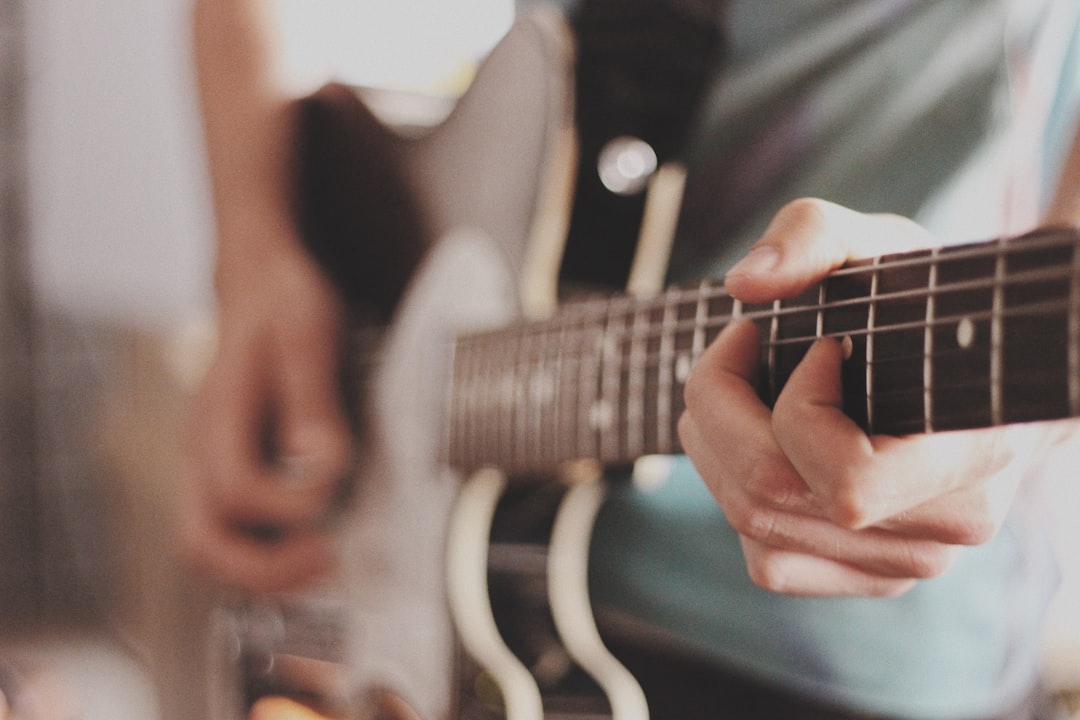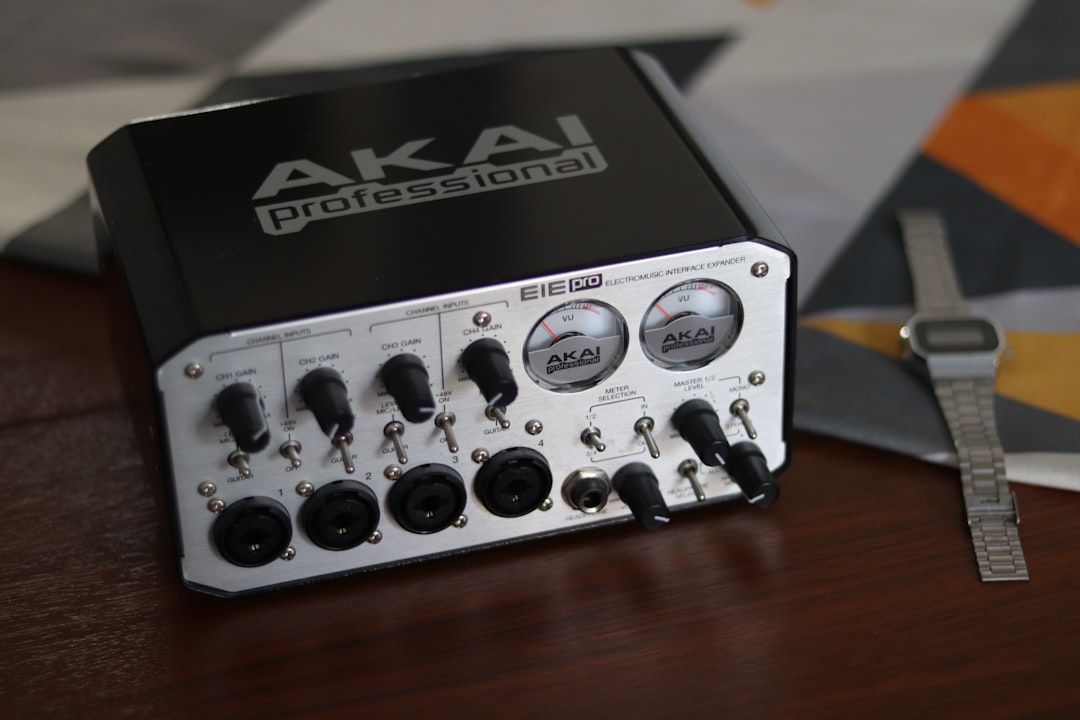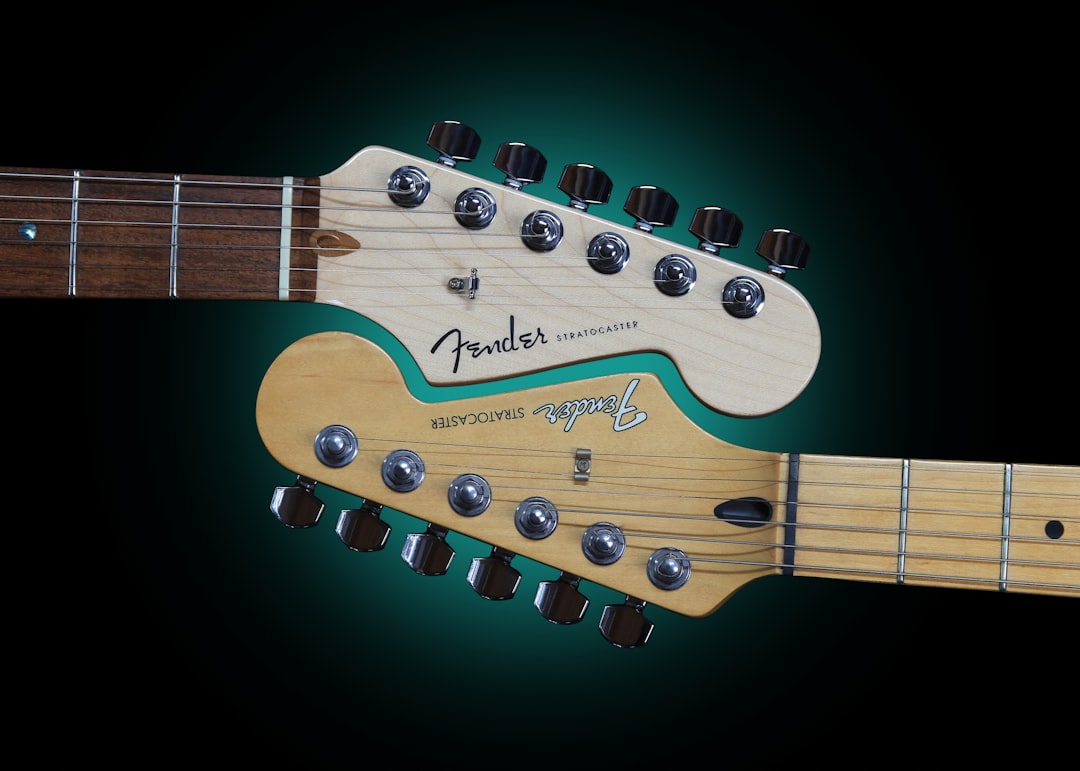- Introduction: Who is Kazuki Isogai?
- Amplifier Setup and Key Gear Used by Kazuki Isogai (Creepy Nuts, iri, Nao Yoshioka)
- Signature Guitar and Tone Characteristics of Kazuki Isogai
- Effects Pedals and Board Configuration – Kazuki Isogai’s Live Rig
- Tone Settings, EQ, and Mixing Techniques – Isogai’s Approach to Sonic Balance
- Affordable Gear Alternatives to Recreate Kazuki Isogai’s Sound
- Conclusion: The Philosophy Behind Kazuki Isogai’s Guitar Sound
Introduction: Who is Kazuki Isogai?
Kazuki Isogai is a highly regarded support guitarist, known especially for his work with Creepy Nuts. His refined playing style and versatile tone have captivated audiences across genres. From R&B to soul collaborations with artists like iri and Nao Yoshioka, Isogai’s ability to craft tones that complement the song rather than dominate it is his standout trait.
What makes his tone so compelling is its minimalistic yet impactful presence. While his phrasing tends to be simple, the depth and dimension in his tone give the music an elevated, immersive feel. This is achieved by tailoring his gear and techniques to match each live or studio context.
During Creepy Nuts’ live performances, Isogai plays a crucial role—providing riffs and backing parts that support the music without overpowering it. Songs like “Nobishiro” and “Katsute Tensai Datta Oretachi e” showcase his refined sense of chord voicing and effects usage that blend seamlessly into the band’s identity.
His rig includes modern and highly adaptable tools like the Line 6 Helix Floor multi-effects processor and the FREE THE TONE ARC-4 audio routing controller, along with his own signature pedals. These allow him to maintain a consistent “Isogai tone” across all venues and genres—marking him as a true professional in the field.
For guitarists and fans alike, his social media (especially Instagram and X, formerly Twitter) offers valuable insights into his rig and setups. Official account:
▶ @isogai_guitar – Official X Account
As a support guitarist, his role is to enhance the main artist’s world—every piece of gear and setting is chosen with purpose. Understanding his approach is highly educational for musicians and producers alike.
This article will break down Kazuki Isogai’s amp, guitar, and effects setups, as well as EQ and tone crafting strategies, with recommendations for more budget-friendly alternatives for those aiming to replicate his sound.
▶ Search official Creepy Nuts music videos on YouTube
Amplifier Setup and Key Gear Used by Kazuki Isogai (Creepy Nuts, iri, Nao Yoshioka)
Kazuki Isogai switches between physical amps and amp simulators depending on the situation. For Creepy Nuts’ live shows, he often prioritizes portability and sonic consistency, opting to use amp modeling within multi-effects units. In the studio, he turns to plug-ins like AmpliTube and GUITAR RIG for precise tone shaping and mix integration.
His main live rig centers on the Line 6 Helix Floor. Within the Helix, Isogai uses classic amp models like Essex A30 (a VOX AC30-style model) and Brit Plexi Brt (based on the Marshall Plexi). He chooses between them depending on the song’s mood and tone requirements. His usage of MIDI-based scene switching is highlighted in interviews such as this one from FREE THE TONE, where he explains how he dynamically alters amp sounds throughout the set.
The Essex A30 is ideal for shimmering clean tones or crunchy edge-of-breakup sounds that sit well with the rhythmic nature of rap-rock arrangements. In contrast, the Brit Plexi Brt adds punchy midrange ideal for lead parts and boosted backing chords that need more cut in the mix.
In the studio, Isogai leans on software-based amp simulation tools like AmpliTube 5 and GUITAR RIG 6. These offer detailed customization, including mic positioning, cab modeling, and IRs (Impulse Responses), allowing him to dial in the most appropriate sound for each song—reflecting his belief that every track demands a unique guitar role.
As this hybrid approach gains traction, many modern guitarists are shifting toward flexible rigs that blend physical and digital gear. Isogai’s system is a great example of how to make such setups work seamlessly both on stage and in the studio.
| Gear Name | Brand | Amazon Link | Used With | Guitarist | Notes |
|---|---|---|---|---|---|
| Line 6 Helix Floor | Line 6 | Search on Amazon | Creepy Nuts | Kazuki Isogai | Primary live rig. Utilizes amp models like Essex A30 and Brit Plexi Brt. |
| AmpliTube 5 | IK Multimedia | Search on Amazon | Creepy Nuts | Kazuki Isogai | Studio use for in-depth tone shaping tailored to each track. |
| GUITAR RIG 6 | Native Instruments | Search on Amazon | Creepy Nuts | Kazuki Isogai | Used as a supplemental amp simulator in recording environments. |
Signature Guitar and Tone Characteristics of Kazuki Isogai

At the heart of Kazuki Isogai’s tone is his signature guitar—the Momose MJS-MV Kazuki Isogai, crafted by the prestigious Aska workshop in Nagano, Japan. Released in 2021, this model is tailored to his playing style and musical philosophy, offering professional-grade performance and versatility.
What sets this guitar apart is its body top made from Japanese Horse Chestnut (Tochi), a rare tonewood that contributes to its distinctive sonic and visual character. This wood provides rich upper mids and sparkling highs, ideal for articulate chord work and expressive rhythm parts. It also maintains warm sustain, making it an excellent choice for Isogai’s soulful and dynamic playing style.
The pickups are Mojotone Classic Strat single coils, known for their wide frequency response and dimensional clarity. These pickups capture nuanced phrasing and dynamic range, aligning perfectly with Isogai’s expressive approach—especially in Creepy Nuts tracks that demand lyrical, vocal-like guitar lines.
According to Isogai, this guitar strikes the perfect balance between personality and adaptability, allowing him to use it seamlessly across live and studio settings. That flexibility is crucial for a player who supports artists in genres ranging from hip hop to neo-soul and R&B.
He also uses this guitar when performing with artists like iri and Nao Yoshioka, where the guitar must deliver both smooth clean tones and tight rhythm comping. Its voice fits those genres remarkably well.
Note that the Momose MJS-MV Kazuki Isogai model is typically built to order, which can lead to longer delivery times. Tonally, it draws inspiration from Fender-style single coil guitars, but with the tight craftsmanship and responsiveness of Japanese handmade builds.
| Gear Name | Brand | Amazon Link | Used With | Guitarist | Type | Notes |
|---|---|---|---|---|---|---|
| Momose MJS-MV Kazuki Isogai | Momose | Search on Amazon | Creepy Nuts | Kazuki Isogai | Electric Guitar (Strat-style) | Signature model with Tochi top wood and Mojotone pickups. Designed for clean, articulate comping and expressive playability. |
Effects Pedals and Board Configuration – Kazuki Isogai’s Live Rig
Kazuki Isogai’s pedalboard reflects a professional balance between tone quality and real-time flexibility. As a guitarist who navigates between rhythmic comping and expressive lead playing, his board is built to support a wide tonal spectrum—from clean textures to light overdrive and ambient effects—all tightly controlled within a streamlined system.
At the core of his board is the Cornerstone Antique V3 Kazuki Isogai, a signature overdrive pedal that builds on the TS-style drive platform with modern clarity and responsiveness. One standout feature is the Hot Mode, which instantly adds gain and thickness, allowing smooth dynamic transitions without losing articulation or tone integrity—ideal for dramatic changes within a live set.
This pedal works particularly well with clean amps and responds beautifully to guitar volume changes, letting Isogai shift from clean to crunch without switching presets. In Creepy Nuts’ dynamic arrangements, this kind of flexibility is essential to follow the emotional flow of each song.
Supporting the board’s infrastructure is the FREE THE TONE ARC-4, a high-end audio routing and switching system. With full MIDI capability, it allows Isogai to control not only analog pedals but also switch scenes within his Line 6 Helix Floor. This integration creates a hybrid system where analog and digital gear operate as one, offering precise control and reliability in live settings.
The Helix Floor is more than just an amp modeler in his setup. It handles modulation, delay, pitch shifting, and other time-based effects. Isogai commonly uses the built-in reverb and delay blocks from Helix for spatial control, while external drive pedals shape his core tone.
This structure allows him to maintain both signature tone and versatility. For each song, specific MIDI scenes switch the combinations of drive, modulation, and amp models in real-time, optimized for stage environments. The system reflects a “player-first” philosophy—built to react naturally and consistently under pressure.
| Gear Name | Brand | Amazon Link | Used With | Guitarist | Effect Type | Notes |
|---|---|---|---|---|---|---|
| Cornerstone Antique V3 Kazuki Isogai | Cornerstone Music Gear | Search on Amazon | Creepy Nuts | Kazuki Isogai | Overdrive | Signature pedal. TS-style with enhanced clarity and Hot Mode for gain boost. |
| FREE THE TONE ARC-4 | FREE THE TONE | Search on Amazon | Creepy Nuts | Kazuki Isogai | Switching System | MIDI-compatible routing controller. Links pedals and Helix for seamless control. |
| Line 6 Helix Floor | Line 6 | Search on Amazon | Creepy Nuts | Kazuki Isogai | Multi-effects Processor | Handles amp modeling, ambient effects, and patch switching in coordination with ARC-4. |
Tone Settings, EQ, and Mixing Techniques – Isogai’s Approach to Sonic Balance

Kazuki Isogai’s sound design is defined by one clear philosophy: serving the music first. His tone never competes with vocals or other instruments—instead, it elevates the entire arrangement with subtlety and precision. This mindful approach makes his sound feel cohesive and well-integrated in any ensemble, especially in hybrid genres like Creepy Nuts’ rap-rock fusion.
For live settings, Isogai relies on the Line 6 Helix Floor for amp modeling, selecting profiles such as the Essex A30 (VOX-style) for shimmering clean/crunch textures and Brit Plexi Brt (Marshall-style) for thicker, punchier tones. These are MIDI-switched depending on the song part—allowing seamless transitions between rhythm support and lead projection. Each patch is carefully dialed in, including reverb and delay levels, tone stack adjustments, and gain staging.
His EQ choices are crafted not just on the pedalboard but with the entire sound system in mind. He ensures his frequencies do not clash with vocalists or rhythm sections, resulting in a cleaner mix. A typical EQ layout includes:
- Low Cut (HPF): Cutting below 80–100 Hz to avoid overlapping with kick drums and bass.
- Mid Boost: Light lift around 1 kHz to bring presence to the guitar tone, without clashing with the vocal midrange (2–4 kHz).
- Presence: Adjusted around 4.5–6 kHz for airiness or brightness, depending on the acoustic space—sometimes even reduced in reflective rooms.
In studio sessions, Isogai turns to AmpliTube 5 and GUITAR RIG 6 for detailed amp simulations. These allow him to tweak cabinet models, microphone positions, and impulse responses (IRs) to fit the specific vibe of each track. This ensures that each guitar part has the right tonal depth and sits well within the arrangement.
One particularly refined touch is his use of slightly “muffled” tones. Rather than aiming for maximum clarity, Isogai often softens the upper mids and highs to avoid interfering with vocal articulation or percussive transients. This restraint creates an ambient cohesion that is subtle yet essential—and it’s frequently praised by both fans and sound engineers.
Another key part of his tone architecture is the FREE THE TONE ARC-4. Not only does it allow seamless switching between analog pedals and Helix patches, but it also acts as a central control hub. MIDI messages are programmed per song, changing drive gain, delay time, and effect combinations—offering precision and repeatability in high-pressure live contexts.
In summary, Kazuki Isogai’s EQ and tone-setting workflow goes far beyond personal taste. It’s a masterclass in listening, understanding your role in the mix, and supporting the entire ensemble. His approach shows that true guitar excellence often lies in knowing when—and how—to hold back, crafting a sound that supports rather than overwhelms.
Affordable Gear Alternatives to Recreate Kazuki Isogai’s Sound
While Kazuki Isogai’s gear—such as his signature guitar and boutique effects—offers exceptional sound quality and flexibility, it may not be within reach for every guitarist due to cost or availability. Fortunately, there are more accessible alternatives that can emulate key aspects of his tone without breaking the bank.
To get closer to his sound, focus on three core elements: (1) clear, dynamic overdrive for clean-to-crunch flexibility, (2) natural-sounding ambience via reverb and delay, and (3) simplicity—especially if you’re not relying on MIDI control.
For overdrive, the BOSS SD-1 Super OverDrive is a great substitute. As a classic TS-style pedal, it emphasizes the midrange and can handle both tight rhythm and lead tones. While it doesn’t match the nuanced control of Isogai’s Antique V3, it still reacts well to guitar volume adjustments, enabling clean-to-crunch transitions just like his setup.
For multi-effects and amp modeling, the Zoom G6 is an excellent budget-conscious option. It supports impulse responses (IRs), features multiple amp models, and offers parametric EQ—all in a compact format. Notably, it includes models inspired by VOX AC30 and Marshall Plexi, making it well-suited for recreating Isogai’s live tones with Helix.
If you’re looking for a more compact and affordable solution, the Mooer PE100 provides essential modulation, delay, and amp sim functions for home practice or small venue gigs. It lacks MIDI or high-end modeling, but still captures a musical and flexible sound.
In terms of guitars, consider models like the Fender Player Stratocaster (Mexico) or the YAMAHA PACIFICA612V. The PACIFICA features an HSS pickup configuration and Alder body, offering clarity and versatility similar to Isogai’s Momose. It also provides excellent playability at a reasonable price.
These affordable choices won’t perfectly replicate his boutique setup, but they’ll get you remarkably close—especially when paired with good technique and careful EQ. The essence of Isogai’s tone lies in balance, presence, and subtlety—qualities that can be captured even with more modest gear.
| Type | Gear Name | Brand | Amazon Link | Used With | Guitarist | Notes |
|---|---|---|---|---|---|---|
| Overdrive | BOSS SD-1 Super OverDrive | BOSS | Search on Amazon | Creepy Nuts (inspired) | Kazuki Isogai | Midrange-focused TS-style overdrive. Responsive to volume knob dynamics. |
| Multi-effects Processor | Zoom G6 | Zoom | Search on Amazon | Creepy Nuts (inspired) | Kazuki Isogai | Includes amp sims, IR support, and EQ—great for recreating Helix-like tones. |
| Electric Guitar | YAMAHA PACIFICA612V | YAMAHA | Search on Amazon | Creepy Nuts (inspired) | Kazuki Isogai | Versatile HSS configuration with smooth neck and clean tones. Ideal budget pick. |
| Compact Multi-FX | Mooer PE100 | Mooer | Search on Amazon | Creepy Nuts (inspired) | Kazuki Isogai | Simplified effects unit for home or light gigging. No MIDI, but intuitive layout. |
Conclusion: The Philosophy Behind Kazuki Isogai’s Guitar Sound

If there’s one word that defines Kazuki Isogai’s approach to guitar, it’s “intentionality.” His tone is crafted not to dominate the mix, but to enhance it—always complementing the vocal and rhythmic elements of the song. Whether he’s supporting Creepy Nuts with dynamic chord work or delivering expressive phrases for artists like iri or Nao Yoshioka, Isogai’s guitar always feels like an extension of the music itself.
His signature guitar, the Momose MJS-MV Kazuki Isogai, is a perfect reflection of this philosophy. Built with fine Japanese craftsmanship and high responsiveness, it reacts organically to his touch, allowing the player’s nuances to shine. Likewise, his Antique V3 pedal captures the warmth and dynamics of classic TS overdrives but adds modern clarity and adaptability.
Live, his rig is centered around the Line 6 Helix Floor and FREE THE TONE ARC-4. This setup allows him to switch tones seamlessly through MIDI, adapting to the emotional arc of each song in real time. It’s not just a collection of gear—it’s a system designed to deliver the right sound at the right moment, reliably and consistently.
In the studio, he takes a similar mindset, using AmpliTube 5 and GUITAR RIG 6 to create track-specific tones. With these tools, he can fine-tune the amp model, cabinet IR, and mic placement to suit each song’s tempo, arrangement, and mood—giving every guitar part its own place in the mix.
What makes Isogai’s sound so compelling is the delicate balance he achieves: his guitar never shouts for attention, yet it’s impossible to imagine the music without it. This invisible craftsmanship is what separates good guitarists from truly great ones—and it’s something every player can aspire to.
For readers trying to emulate his tone, it’s not just about the gear. More importantly, it’s about understanding the role of the guitar in a given musical context. Think about tone in terms of support, texture, and space. Learn to listen to the ensemble as a whole, and your playing—like Isogai’s—will naturally find its place.
Isogai continues to share updates about his gear and rehearsal setups on social media, offering valuable insights for tone chasers and live players alike. Be sure to follow him here:
▶ @isogai_guitar – Official X (Twitter) Account






コメント